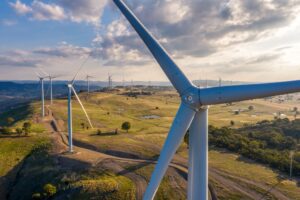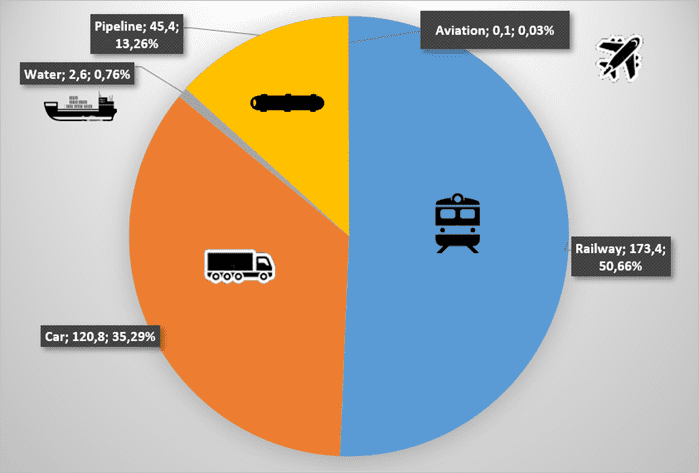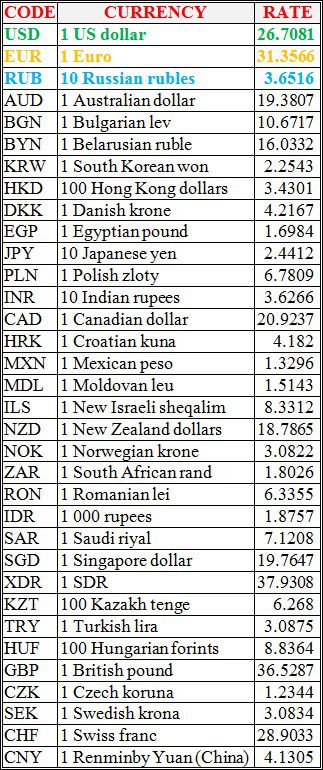
The vast majority, namely 83% of members of the European Business Association (EBA), forecast growth of their business in 2022, while a year ago 60% members said this, according to Business Forecast 2022 conducted by the European Business Association together with Nestlé Ukraine.
“In 2022, the vast majority, namely 83% of the respondents, forecast growth of their business, 15% of the directors assume it will be possible to sustain their business performance at the level of 2021, and only 2% expect some deterioration in their business situation (14% last year),” the EBA said.
According to the press release, the companies have significantly improved the financial forecasts for next year. Most entrepreneurs, namely 67%, forecast income growth by 10-20% – in hryvnia. This figure returned to the level of 2020 after a significant decline in the past.
Thus, 36% of directors expect revenue growth of up to 10% in volume terms, and almost half (49%) expect a 10-20% growth, the EBA said.
All respondents to this year’s survey note their plans to increase the salaries of their employees in 2022. Most managers, namely 55%, plan to increase salaries by 5-10%. Other 30% will increase salaries by 10-20%. It should be mentioned that last year 15% of the companies were not able to increase staff salaries.
The companies are enthusiastic about the plans to create new jobs. Thus, last year 60% of companies did not plan any changes in their staff, while this year their number is only 36%. The majority, namely 58% of the top managers, plan to expand their staff. And only 6% of the companies will be forced to reduce staff.
One-third of the entrepreneurs, namely 32%, plan to implement new investment projects next year with a budget from $20,000 to $400 million. Moreover, we are pleased to note that almost half of the respondents (49%) plan to invest in social initiatives aimed at supporting Ukrainian society next year.
“Such optimistic forecasts of the directors are certainly very uplifting. Maybe, for the first time since the pandemic broke, we can talk about a significant improvement in the assessments and sentiments of the top managers regarding their own business plans,” EBA Executive Director Anna Derevyanko said.
The CEOs also identified the top three tasks from business to the government for next year. It’s been the second year in a row that the first need mentioned is the need for judicial reform and the rule of law, the second is the fight against corruption, and the third is the need to ensure political stability and effective management in the country. Also, this year, the directors highlighted the importance of further reforming the tax and customs sectors.
Altogether, 95 CEOs of the EBA member companies took part in the Business forecast 2022 study, conducted in September 2021.

CWP Europe of the international energy infrastructure development company CWP Global, operating in Australia and Europe, enters the Ukrainian market for the first time with the acquisition of a 73 MW onshore wind turbine in Kherson region, the representative office of CMS Cameron McKenna Nabarro Olswang (Germany) in Kyiv said on its website.
“CMS Cameron McKenna Nabarro Olswang in Kyiv has advised CWP Europe (CWP) on the acquisition of 73MW wind project in development. The acquisition marks CWP’s first investment in Ukraine,” CMS said in a press release.
According to Vitaliy Radchenko, Head of Energy & Projects at CMS in Kyiv, whose words are quoted in the press release, the acquisition shows confidence in the long-term prospects of the Ukrainian renewable energy sector and its further growth potential.
According to Interfax-Ukraine, the deal concerns Prydniprovski Lany LLC (Bilozerka district, Kherson region). According to information from open sources, the registration of the change of its shareholders took place on July 19, 2021: now the LLC is fully owned by Sea Double Pi Europe S.A.R.L with a contribution to the charter capital of UAH 20.02 million.
Among the ultimate beneficiaries are the founder and CWP Global American Board Chairman Mark Crandall (26.81%), founders and members of the board of directors Bulgarian Dimitar Enchev (20.41%) and Italian Fabrizio Cagnasso (12.45%). Until the beginning of July 2021, the shareholder of the LLC was open joint-stock company Greenworks Holding, founded in Belgium by Tom Hanson.
Vitaliy Shubin, prior to his appointment as First Deputy Minister of Energy in October 2019, headed the LLC, then called the Suvorov Wind Power Plant. After him, this position was taken by Oleh Terletsky, who is currently a member of the supervisory board of PJSC Ukrhydroenergo. Viktoria Tokova is now the director of the LLC.
Earlier, CWP Global reported on its website that the 73 MW wind project, which it intends to implement in Ukraine, is under development. CWP Global’s project is expected to enter construction in 2023, bringing EUR 76 million of investment and creating 360 jobs.
Expanding its portfolio into Ukraine with further large-scale projects, the company was guided by the fact that, according to the forecasts of the International Energy Agency, the volume of production of renewable energy sources in the country will grow from 4% in 2015 to 25% over the next decade, the company said.
At the same time, the company said that due to its proximity and quality of renewable resources, Ukraine is also uniquely positioned to potentially be a major producer and exporter of green hydrogen as the EU looks to hydrogen as an important decarbonisation vector.
“CWP Global views Ukraine as a potential continent-scale production hub to generate and export hydrogen to western European countries,” the company said.
“Western European markets are rapidly increasing demand for green electricity and will soon dramatically increase demand for green hydrogen, all due to the drive to decarbonize the energy sector. Given Ukraine’s important renewable energy potential, and because of its proximity to this growing market, it was the obvious choice for CWP Global to invest in Ukraine,” Crandall said.
Ukrainian experts said that the project will be implemented without the feed-in tariff, since there is no longer such a legislative opportunity for new projects.
CWP Global is a global pioneer in the large-scale production of clean hydrogen.
CWP Global was founded in 2007 with the aim of entering the emerging renewable energy market in Southeast Europe (SEE), including major projects in Romania and Serbia, as well as Australia (2 GW).
In late 2020 we merged CWP Renewables with the Grassroots Renewable Energy Trust, creating a multi-billion-dollar integrated renewables company in partnership with Partners Group.

President of Ukraine Volodymyr Zelensky met with business representatives and potential investors (American Jewish Committee) in New York, the presidential press service reported. The Head of State noted that Ukraine is carrying out large-scale transformations aimed at implementing European and Euro-Atlantic standards.
“The support of partners and allies, first of all the United States, is extremely important for us,” Zelensky said.
The President stressed that the development of economic and investment cooperation is one of the most important priorities for further deepening the strategic partnership between Ukraine and the United States.
“I invite you to become part of the process of transformation of Ukraine,” the President said.
Zelensky said that Ukraine had developed an ambitious plan for change in the country.
“We are counting on the support of partners, especially the United States, which will allow us to conduct a transformation in the short term. I urge you to join the implementation of this plan,” he said.
The President briefed the investors on the security situation in Donbas and the challenges in the energy sector in the context of the Nord Stream 2 project, the press service said.
The President noted that Ukraine is preparing for mourning events on the occasion of the 80th anniversary of the Babyn Yar tragedy and called for joining these events.
Zelensky expressed gratitude to the Jewish community of the United States of America, which has historical ties with our country and has made a significant contribution to the development of strategic relations between Ukraine and the United States.
As reported, on the evening of September 20, Zelensky arrived in New York to participate in the 76th session of the UN General Assembly. The annual debate runs until September 27.
Zelensky is expected to speak at the general debate of the UN General Assembly on September 22.
Volumes of cargo transportation in Jan-July 2021, mln tons

National bank of Ukraine’s official rates as of 22/09/21

Source: National Bank of Ukraine